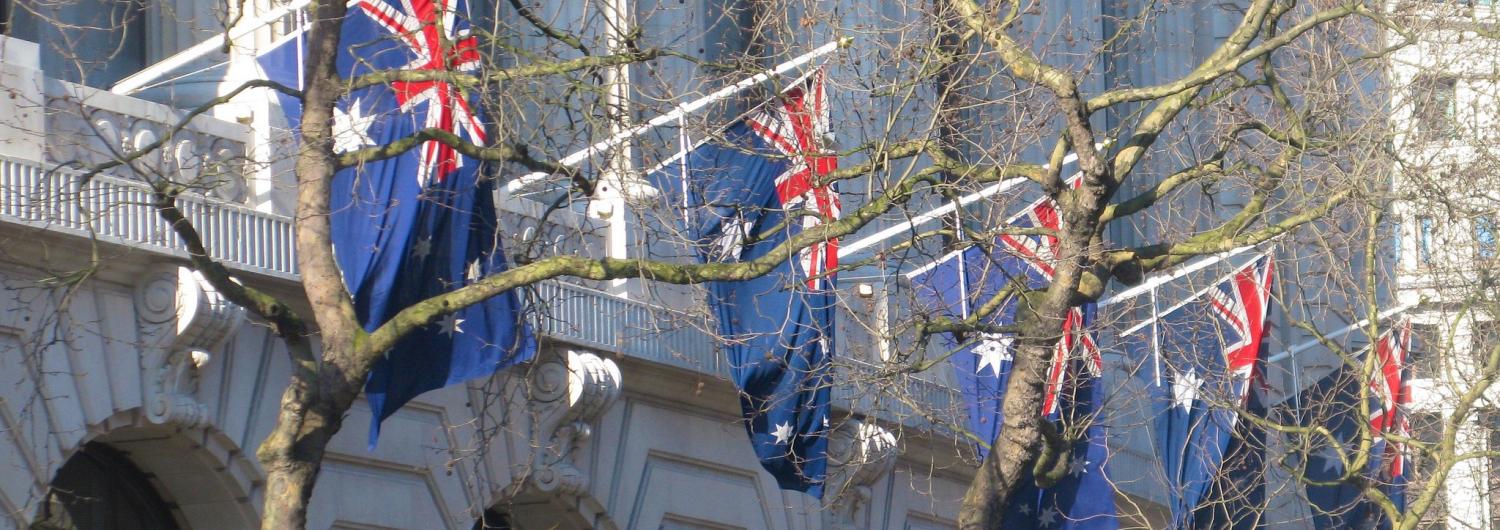Earlier contributors to The Interpreter’s Foreign Policy White Paper debate have clearly and succinctly articulated some of the challenges the government must address if it is to develop a comprehensive and effective strategy to guide Australia’s international engagement over the next ten years.
Michael Fullilove calls for 'greater ambition in defining Australia’s interests’, but notes that this needs to be tempered by coherence. Stephen Grenville argues that Australia's 'best chance of coherent ambition lies in Asia', but that we need to '[lift] our game' and redirect our efforts to the Regional Comprehensive Economic Partnership (RCEP) and resolve potential inconsistencies in our approach to Chinese foreign investment in Australia. Sam Roggeveen highlights the importance of 'finding a way to manage the tension between the interests of our major strategic partner - the US - and our primary economic partner - China'. Michael Heazle and Andrew O'Neil highlight that 'Australia and Japan’s bilateral relationship...will be more important than ever in promoting shared security and political interests in Asia'. They note that 'increased security cooperation between US allies with support from US security partners in the region' will assist in managing a ‘possible drawdown of US strategic engagement in Asia.
Hugh White argues, inter alia, for an Asian order which ‘ensures the largest possible US role consistent with a stable and cooperative relationship with China’; accords China a larger role; provides a ‘respected and secure place for Japan as East Asia’s other key major power’; protects the ‘interests of the region’s middle and smaller powers’; and ‘upholds the broad norms of international conduct’.
In addition to the White Paper’s necessary focus on the Indo-Pacific region, it will – as Geoff Miller points out – be important to pay ‘sustained attention to many kinds of countries and relationships as well as issues'. He also suggests that Australia should accord a ‘high priority on multi-lateral diplomacy as a force multiplier’.
In order for the White Paper to address these challenges successfully and to balance Australia’s bilateral, regional and multilateral priorities effectively, it will be necessary to ensure that sufficient resources are devoted to Australia's international engagement, both in Australia and overseas. As the Lowy Institute has identified in the past and Geoff Miller notes in his contribution, there are 'very limited resources available to the Department of Foreign Affairs and Trade, in comparison with relevant countries world-wide'.
The Lowy Institute’s Global Diplomacy Index 2016 ranks Australia’s diplomatic network as 27th among G20 and OECD countries, in between Saudi Arabia and Israel (which are below) and Portugal, Belgium and the Czech Republic (which are above). Perhaps, as a middle power, Australia should be aiming to be within the top 20, along with other like-minded countries such as Canada (18th) or The Netherlands (17th). To achieve this would require a significant injection of additional funding for Australia’s diplomatic network .
Damien Spry highlights the importance of public diplomacy in his contribution to this debate. Despite successive governments attempts to present Australia as a diverse, sophisticated and innovative nation, Australia is all too often perceived as being a predominantly Anglo-Celtic - and at times racist - country, which is too closely aligned to traditional partners such as the United Kingdom and the United States. While there have been efforts by successive governments to address these perceptions, including through the Gillard government's 2012 Australia in the Asian Century White Paper, the fact remains that Australia is from time to time seen internationally as inward-looking and hostage to its colonial past.
The task of presenting Australia as a diverse, sophisticated and innovative nation goes beyond initiatives such as fashion diplomacy or promoting sporting prowess, which perhaps reinforce traditional stereotypes of Australia. Greater effort and resources should also be invested in showcasing excellence in education, science, the arts and so on, in conjunction with the private sector and side-by-side with posts' economic diplomacy efforts. Public diplomacy is an area which is often under-resourced at overseas posts, with many managing on a shoestring budget.
Training and development is another important area of focus. While the recent establishment of DFAT's diplomatic academy is to be commended, additional resources should be invested to ensure that DFAT staff - both Australia-based and locally-engaged - have the basic drafting, analytical and tradecraft skills necessary to perform their roles to a high standard, which - unfortunately - is not always the case. As an efficiency measure, post management at overseas missions should also have greater flexibility and discretion to manage local staffing (ie. the ability hire and fire), depending on operational requirements and in accordance with local labour law.
All of this will require additional resources and perhaps some trade-offs. Although not likely to be politically palatable, one area which could be looked at is consular assistance. Perhaps the government could consider a public awareness campaign to manage-down the expectations of the Australian public in terms of consular assistance overseas. While the reality television show Embassy a couple of years ago sought to portray the nature and limitations of consular assistance, it is possible that it achieved the opposite of its desired effect and served to increase public expectations of the consular assistance and support that Australia’s overseas missions are able to provide. It also did little to promote popular understanding of the nature of the work of Australia’s overseas posts or to promote Australia as a sophisticated country. More could also be done to promote understanding domestically of foreign and trade policy, and of the importance of Australia’s international engagement for Australia’s prosperity and security.
The White Paper provides an opportunity to look afresh at Australia’s priorities in international engagement - to examine the whole box and dice - and to consider how the many competing priorities should be resourced.
